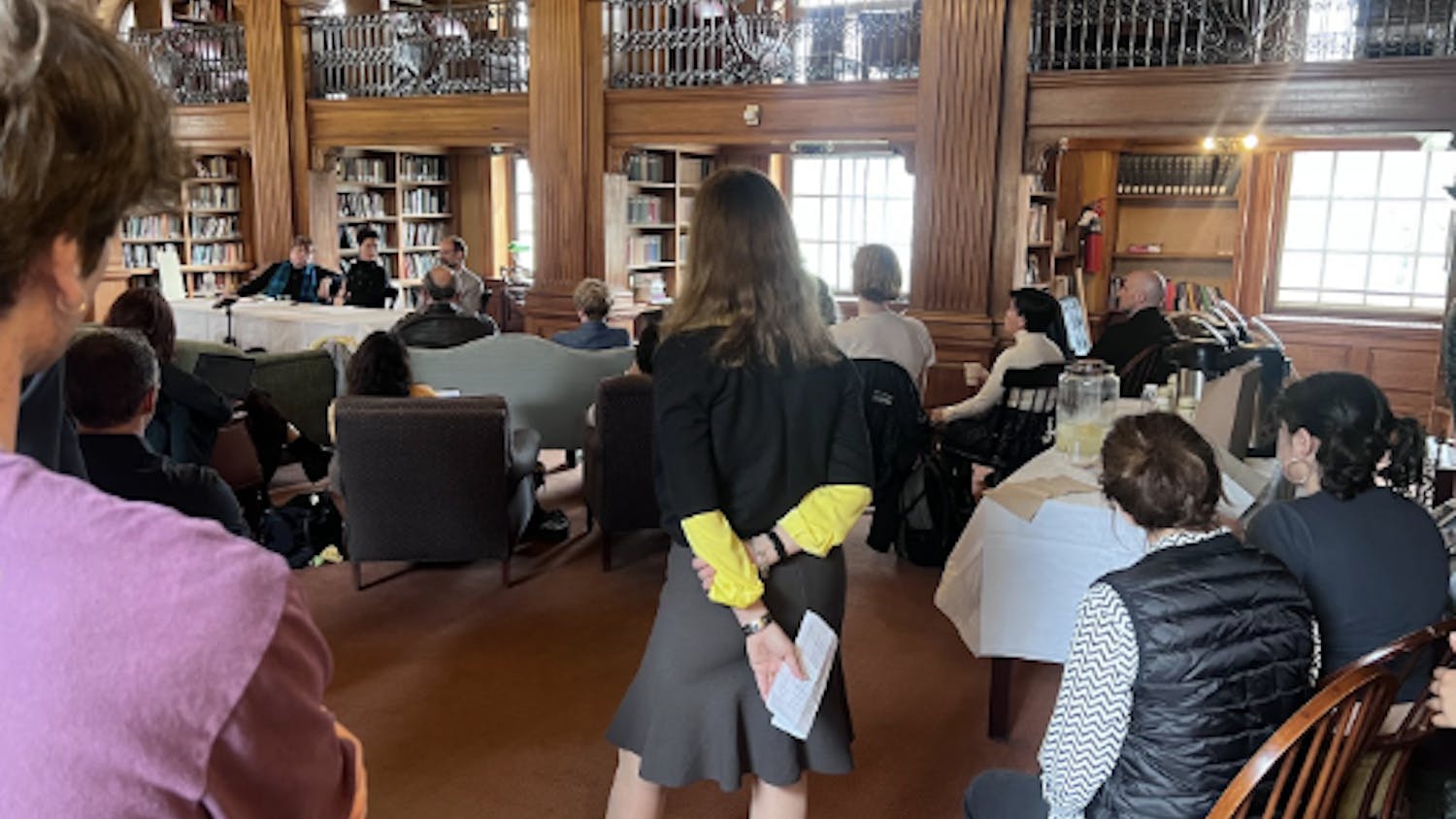Editor's Note: This is the final part of a three-part series in which The Dartmouth will report on the proceedings at the Tribeca Film Festival in New York City.
While many of the movies shown at the Tribeca Film Festival will not be seen outside of the festival circuit, the last week of Tribeca also featured some heavy hitters that are currently set for wide distribution. More prominent films such as "2046" and "House of Wax" screened to sold-out crowds, but two other films made big impressions and promised to reach large audiences stateside in the near future.
The opening night of "Bearing Witness," a new A&E-produced documentary, brought out both a substantial crowd of curious moviegoers and most of the people involved in the making of the film. "Witness" concentrates on several female journalists and their experiences while covering the war in Iraq. The stories of these women are extraordinary, as almost all of them have been covering the news in war zones for several years. The film also takes on an interesting dimension by including the testimony of an American woman working for Al-Jazeera in Iraq, and it is fascinating to see how she has assimilated into the Iraqi society.
While the movie's subject is definitely interesting, the movie itself tends to follow made-for-television aesthetics. It remains grounded in the "talking-head" style of documentary filmmaking and takes an entirely non-confrontational approach to a subject that is rather controversial.
Especially interesting are the social questions that the film unwittingly asks. From the beginning, "Witness" is interested in its subjects because they are women, and it quickly focuses on their intimate lives and their inability to build steady homes and families because of their constantly careening careers. One then wonders whether or not we'd have any interest in their personal lives and familial longings if these journalists were men. Why is it important that the audience sees these women as mothers and wives? The film raises this question, but shows no intent on addressing it.
"Witness" will be broadcast on May 26 on the A&E channel but eager audiences will have to wait another two months to see a more highly anticipated film-festival entry: Russia's blockbuster horror film, "Night Watch," which will play in select cities across the country on July 29.
"Watch" is currently the top grossing film in Russian box-office history. The country hasn't produced much in the way of internationally recognized cinema in recent years, besides 2003's "The Return." But "Watch" is a far, far cry from Andrei Zvyagintsev's intimate character study of a young boy; rather, it's the first installment in a trilogy of sci-fi extravaganzas that includes vampires, prophets, far-off dimensions and lots of guys in dark glasses.
The film is like "Star Wars" meets "The Matrix," with stylistic nods to "Blood Simple" and the Brothers Quay. It's basically an amalgamation of preconceived storylines, except Russified and slightly updated -- the ending could easily be a chapter taken from the Anakin Skywalker storyline. But this utter lack of originality doesn't mean that the film is bad. On the contrary, "Watch" is a totally enjoyable experience and an unexpected outcome from Russia.
In the film, the Night Watch and Day Watch were established centuries ago by the forces of light and darkness, who struck a treaty in order to establish a balance between the two. The members of the Night Watch are the light forces who police the dark vampire forces. They are known as "Others" and are able to sense and see fellow Others as well as the vampires. Furthermore, it is prophesized that a powerful Other -- "The Virgin" -- will rise one day and tip the balance of power, heralding the last battle between the forces of light and dark.
"Watch" is also concerned with the story of its protagonist, Anton. Anton discovers he's an Other when he goes to see a witch doctor about his wife, who has left him. The witch doctor tries to supernaturally execute the unborn child that Anton's wife may have conceived with another man, but the Night Watch stops the magic in the process. Yet Anton can see the Night Watch, who are supposed to be invisible to mortals, and so he is recruited. Difficulties arise 12 years later when Anton finds himself defending the son of his ex-wife against a vampire attack. If all this sounds confusing, it is. But damn, it's fun.
A large part of the film's appeal lies in the visuals. Although "Watch" is constantly shot in low lighting -- Moscow is painted as a universally dark and shadow-filled city, and much of the film takes place during a blackout -- the cinematography is still vibrant. In one scene, a subway screams toward the viewer, and then the camera rapidly tunnels through its cars in a steroid-induced homage to the Lumiere bothers. But the fast pace of the scenes is nicely balanced by more subtle flourishes, like the telling of the story of The Virgin that resembles a flipbook of traditional folk art.
"Watch" is also the first movie I can recall that has interactive subtitles, and this enhances the frenetic and intriguing nature of the film. Subtitles are swiped away by characters' hands, disappear behind people who pace in the shot's foreground, appear letter-by-letter as words are being typed on a computer and are provided in various sizes to increase intensity. It's amazing that, for once, the form of the subtitles furthers the enjoyment of a film instead of detracting from its beauty.
"Night Watch" has become a big surprise hit in Russia, and tickets to both "Watch" and "Bearing Witness" were in high demand at Tribeca. With their anticipated release dates quickly approaching, we'll soon know whether or not they make an equally large impact on the rest of America.



